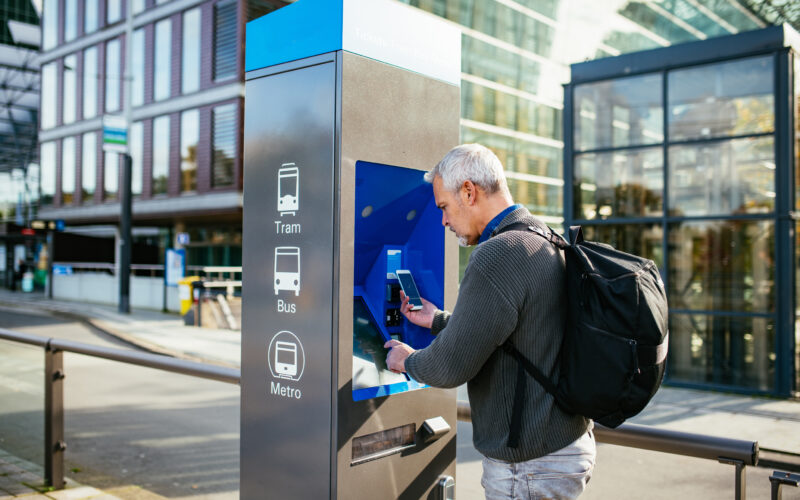Valentine’s Day — a celebration of romance for most, another Wednesday for many, and for the few among us, it’s the perfect reminder to dive into mobile app security for dating apps.
Dating apps serve as intimate repositories of personal information, ranging from basic user profiles to sensitive data like sexual orientation and biometric identifiers. As millions seek connection through digital avenues and artificial intelligence lowers the technical barriers to entry for cybercriminals, there’s good reason to put dating app security under the microscope.
We’re exploring the link between app security and user trust, and a few ways to prevent breaches in dating apps.
Want to learn more about securing your mobile app? Download our Guide to OWASP MASVS-Resilience.
Understanding the stakes: Data vulnerabilities in dating apps
Dating apps have inadvertently become treasure troves of personal data. Consider the depth of data collection: photos, videos, contact details, and even political beliefs are routinely gathered to enhance user experience and facilitate matches.
But that’s just the tip of the iceberg. The reliance on geolocation data for matching introduces another layer of vulnerability. Precise location information, vital for the matchmaking process, can also pose significant risks if mishandled or compromised.
Beyond the surface-level data, dating apps delve into more intimate realms. Tinder, for example, stores facial geometry information for identity verification purposes. While ostensibly for enhancing user security, such practices raise legitimate concerns about data privacy and potential misuse. Bumble takes a similar approach, retaining the data for up to three years — longer than most relationships.
Common vulnerabilities and cybersecurity threats
Dating apps, by their very nature, emerge as prime targets for cybercriminals due to the wealth of personal data they harbor. From repackaging attacks to sophisticated hacking, the threat landscape is diverse and ever-evolving. The top dating apps: Tinder, Bumble, Hinge, Coffee Meets Bagel, Plenty of Fish, and others tend to be top of mind for cybercriminals.
Whether it’s malware distribution or phishing, the result is usually the same — a knock on user trust, reputation, and of course, financial losses. With the spike in downloads and user activity around Valentine’s Day, it’s only logical to expect a spike in cybercrime. Research from Kaspersky, revealed over 1000 threats circulating under the guise of the most popular dating apps in Africa alone. Repackaging attacks not only undermine user trust but also serve as a starting point for malicious actors to gain access to proprietary code and intellectual property.
Real-world examples underscore the gravity of these threats. The notorious 2015 Ashley Madison data breach, serves as a cautionary tale. After analyzing thousands of lines of leaked code, hackers discovered a database of over 15 million passwords obscured using MD5, a cryptographic hash function with numerous vulnerabilities.
In 2020, ISE demonstrated how attackers could access premium features on Bumble, without paying, by reverse engineering their API calls. A cybercriminal could also extract Bumble’s complete user database, including basic user details and images, even when operating as an unverified user with restricted account access. Notably, these issues were largely a result of Bumble “not verifying requests server-side”.
More recently, in 2023, a non-password protected database exposed over 2 million user records from various dating apps, including personally identifiable information (PII) and user photos, some of which were sexually explicit. Data from 419 Dating – Chat & Flirt was exposed along with data from several other dating apps also present in the database.

What security measures should dating apps implement to mitigate data breaches?
Data encryption
Encryption is one of the building blocks of mobile app security, ensuring the confidentiality and integrity of user data exchanged on your platform. When news surfaced that Tinder’s iOS and Android apps lacked HTTPS encryption, it exposed a significant vulnerability within the system. Researchers were able to intercept user data, including photos and swiping activity, and even inject their own images.
This breach not only compromised user privacy but also undermined trust in the app’s security infrastructure. Encryption serves as a vital safeguard against such breaches, encrypting data transmission between the app and its servers, thwarting unauthorized access and preserving user confidentiality.
Authentication
Authentication is sort of a gatekeeper to verify users’ identities, ensuring secure access to the platform. Robust authentication protocols, like two-factor authentication (2FA), biometric recognition, or secure login credentials, are crucial in thwarting malicious actors looking to exploit authentication vulnerabilities.
By implementing stringent authentication processes, dating apps can reduce the risk of unauthorized access and fraudulent activities perpetrated by malicious actors who may illegitimately gain authentication credentials or manipulate authentication mechanisms for nefarious purposes.
End-point attestation
While certificate pinning is a crucial security measure for dating apps, it’s not enough to secure the app against sophisticated attacks like man-in-the-app (MitA) assaults. Rooted or jailbroken devices pose a significant threat, as attackers can exploit administrative privileges to circumvent pinning controls and intercept communications between the app and the server.
End-point attestation offers an additional layer of protection against potential threats. Unlike traditional security measures that focus solely on data transmission, end-point attestation verifies the integrity and authenticity of the dating app itself.
It’s important to keep in mind that while session-based verification typically occurs at app launch, transaction-based validation occurs continuously and on demand. This real-time validation ensures the integrity and authenticity of the app, providing a higher level of security against potential tampering, unauthorized access, and injection attacks.
Practical tips for securing dating apps against data breaches
Decide whether to build or buy your dating app security solution
Building your own security solution is certainly an option. It’s tailored to your app’s specific needs and security requirements, and can integrate with your existing systems seamlessly. What’s more, you retain full control over the development process and can implement proprietary algorithms or protocols.
However, going in-house isn’t as straightforward as hiring a couple of developers and handing them a brief. For starters, it’s a substantial time investment. You’d be looking to attract and hire specialized talent to develop and maintain your custom security solution. Not to mention the support you need to conduct extensive testing and validation processes, and to keep up with a constantly evolving threat landscape.
On the other hand, pre-existing solutions come with a lower total cost of ownership (TCO), meaning they’ll save you a lot of time and resources. They eliminate the need for long development cycles and help you secure your app, fast. Additionally, you’ll gain access to advanced features, expertise, and regular updates to address emerging cybersecurity threats. And don’t forget that pre-existing solutions tend to be more scalable, so you can adjust your security infrastructure as your needs evolve — without the burden of maintaining internal dev teams.
Of course, buying a mobile app security solution is not without its drawbacks. Some off-the-shelf security solutions may not perfectly align with your security requirements and architecture, potentially leaving gaps in protection or introducing unnecessary complexity.
The bottom line is every organization is different, and it’s up to you to make the best choice for your security needs.
Implement multi-layered protection
Integrating multiple layers of security enhances the resilience of your app against potential threats. A combination of code obfuscation, strong runtime app security checks will bolster your dating app’s security. That’s because every additional security measure you implement makes it more challenging for malicious actors to breach your app.
Whether you’re doing it in-house, or integrating a mobile app security solution, you’re going to want to make sure you think like a hacker to cover all your bases.
—
This Valentine’s Day, let’s reaffirm our commitment to safeguarding love in all its digital manifestations, one secure swipe at a time.
Need more on securing your dating app? Our Guide to OWASP MASVS-Resilience is one of the best ways to get started.




